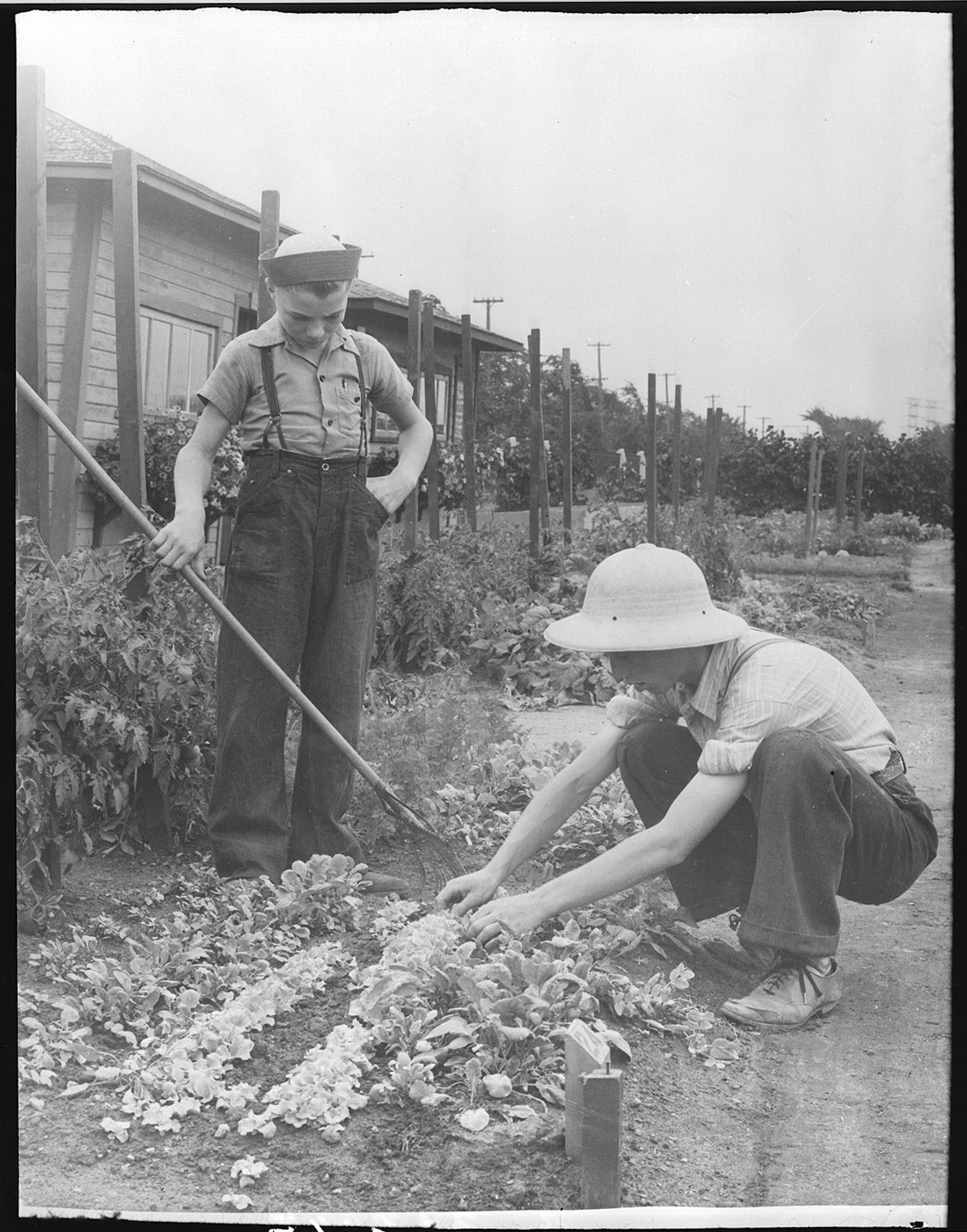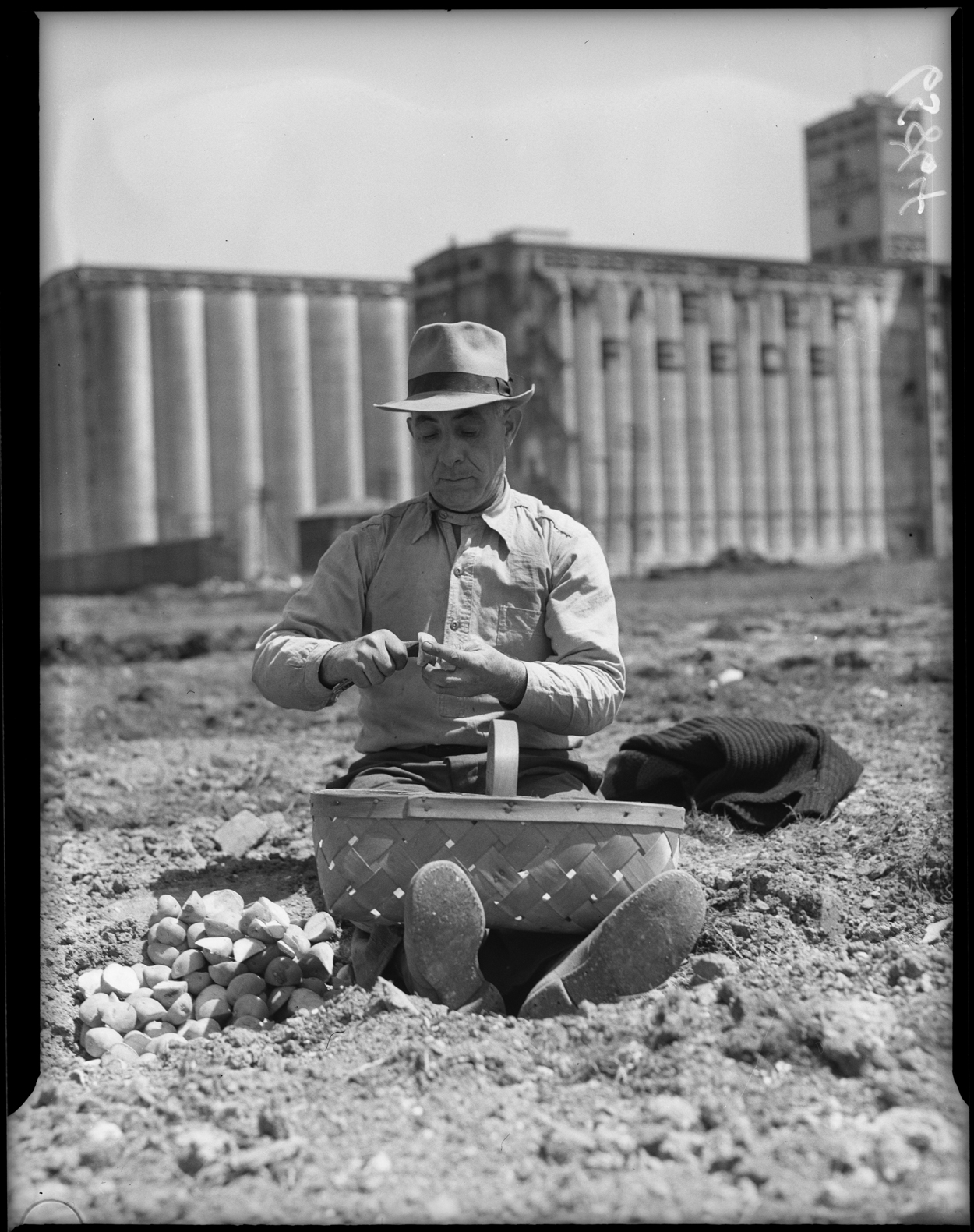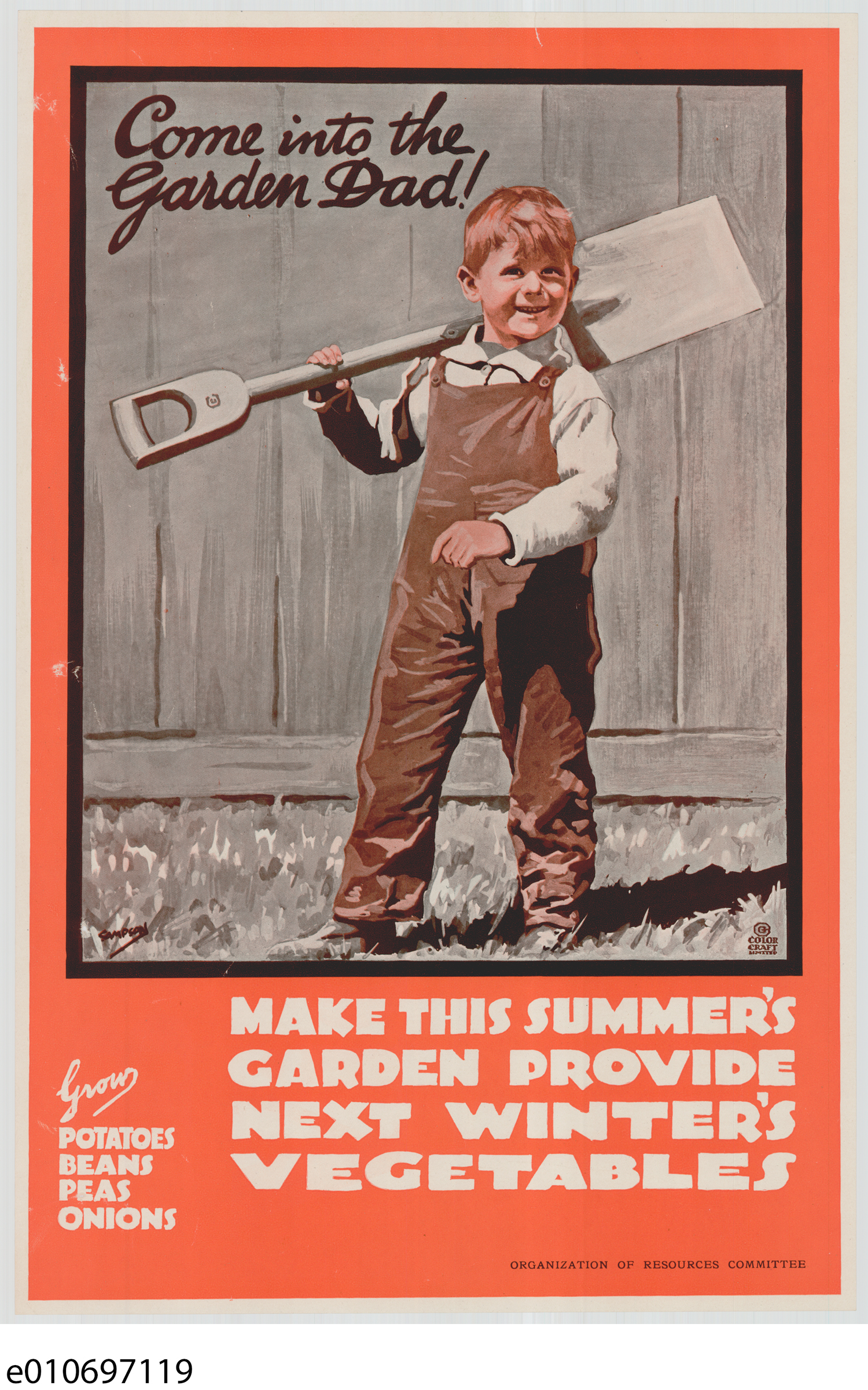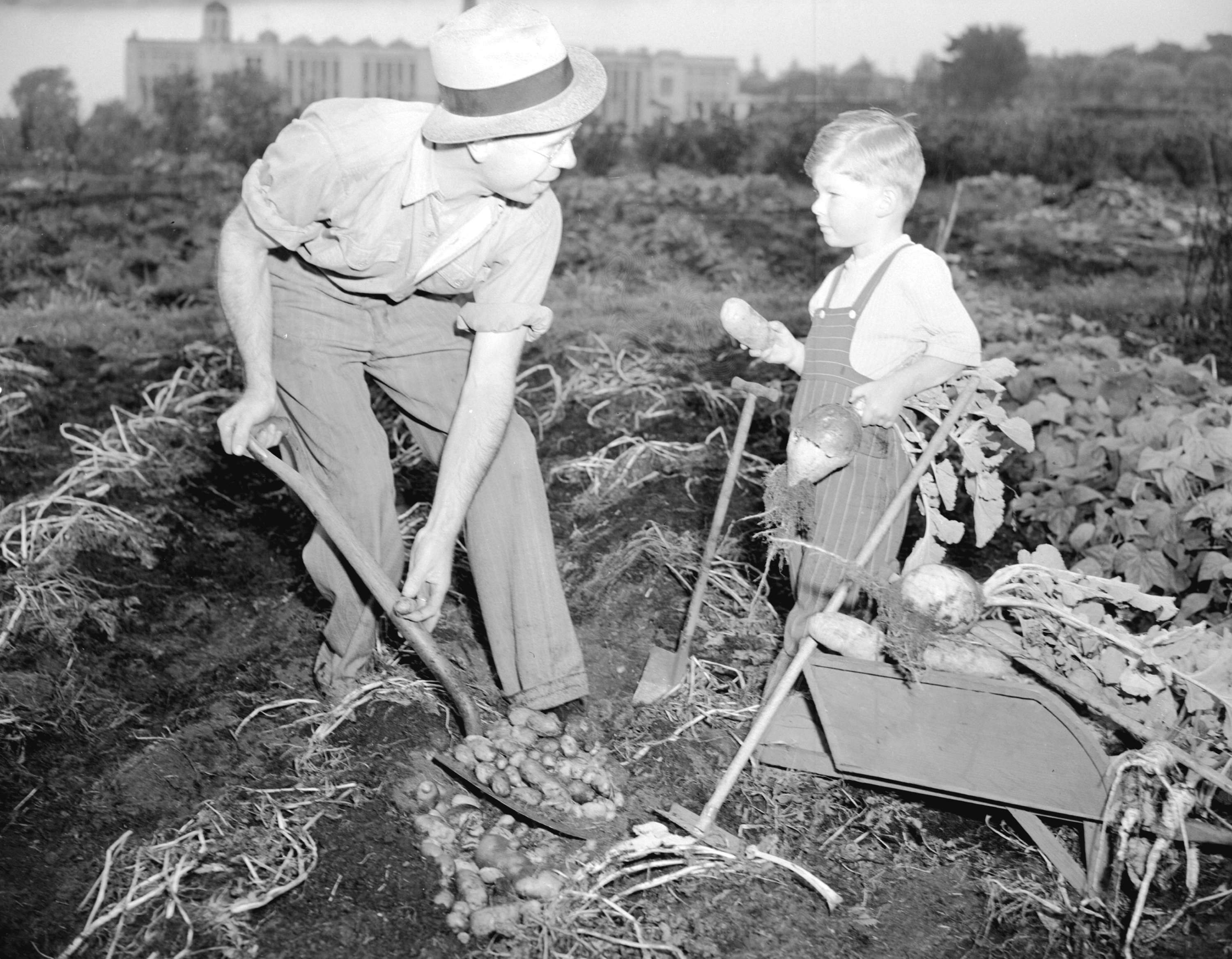The following article is part of an exhibit. Past exhibits are not updated.
During the First and Second World Wars, the Canadian government encouraged citizens to plant vegetable plots in residential yards and public spaces. The plots, known as victory gardens, were a form of material mobilization: The more produce that could be grown by Canadians, the more railcars and transport trucks were free to move goods other than food. In 1944, an estimated 209,200 victory gardens were being grown across the country. This exhibit draws on research by Ian Mosby , author of Food Will Win the War and The Canadian Encyclopedia’s entry on victory gardens. It tells the story of how Canadians, armed with hoes and trowels, dug into the war effort.

The Inexperienced Gardener

Victory gardening was largely an urban phenomenon. Governments, worried city folk couldn’t tell a carrot from a parsnip, released instructional pamphlets to guide them. For example, the Nova Scotia Department of Agriculture published Gardening for Vim and Vitamins in 1943, and the Ontario government issued A Vegetable Garden for Every Home during the First World War. Between tips for sowing, transplanting and watering, the pamphlets read like wartime propaganda. “In these times of stress when the energies of all people are being devoted to further the cause of justice and right,” proclaimed the front page of the Ontario booklet, “the securing of a supply of vegetables should commend itself to the average householder in our towns and cities.”
Pamphlets came complete with a list of suggested vegetable varieties ideal for the backyard garden. Among them:
- Davis white wax beans
- Detroit dark red beets
- Danish ball head cabbage
- Little marvel peas
- Irish cobbler potatoes
- China rose radishes
- Victoria spinach
- Chalk’s jewel tomatoes
Men, take up your spades!
“The most important new gardeners, however — and the ones who dominated wartime imagery of victory gardening — were men,” writes Ian Mosby. Victory gardening was “promoted as a new kind of respectable (and decidedly middle-class) masculine domesticity.”
National Film Board of Canada, 1943
Symbolism
Though originally intended as a means of increasing production during wartime, victory gardens proved more important as a symbolic, patriotic activity rather than a productive one. “From a morale standpoint,” writes Mosby, “victory gardens linked a wholesome and familiar form of domestic labour to the larger war effort in a way that involved the entire family and that was highly visible to friends and neighbours.”
Between the World Wars, community gardening was also promoted during the Great Depression. Called relief gardens, these vegetable patches were more prevalent than the Second World War gardens that followed. In 1943, for example, public land in Toronto cultivated for victory gardening accounted for only 50 per cent of that tilled for relief gardening, while in Québec City it made up 25 per cent. Like victory gardens, relief gardens were both practical and symbolic. By giving unemployed workers a sense of purpose, relief gardens boosted spirits while mitigating food shortages. The fear of going hungry, however, was more potent during the Great Depression than the Second World War, perhaps accounting for the greater prominence of community gardening during the 1930s.
In the 21st century, some commentators say the local food movement, which has been on the rise since the early 2000s, took inspiration from aspects of relief and victory gardening. In addition to supporting local, sustainable farming practices, many see a row of Victoria spinach in the backyard or a vine of little marvel peas atop a high-rise as a means of bringing food production closer to home.

 Share on Facebook
Share on Facebook Share on X
Share on X Share by Email
Share by Email Share on Google Classroom
Share on Google Classroom









